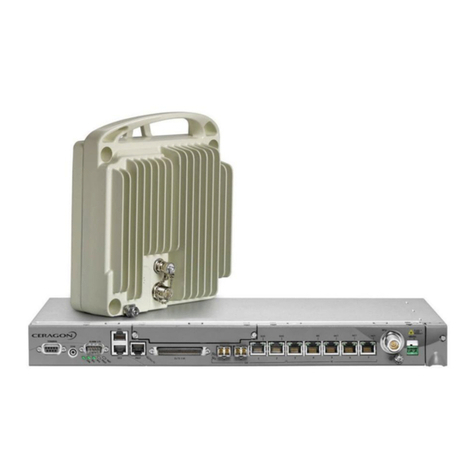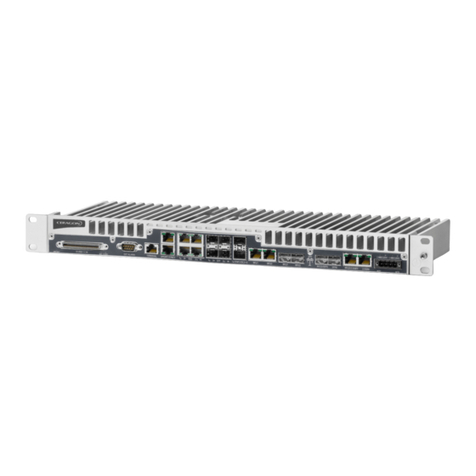
FibeAir® IP-20G Technical Description
Ceragon Proprietary and Confidential Page 4 of 266
4.4.6 Split Mount Configuration and Branching Network...................................................... 54
4.4.7 1500HP/RFU-HP Models and Part Numbers............................................................... 59
4.4.8 OCB Part Numbers...................................................................................................... 59
5. Activation Keys............................................................................................... 61
5.1 Working with Activation Keys....................................................................................... 62
5.2 Demo Mode.................................................................................................................. 62
5.3 Activation Key-Enabled Features................................................................................. 62
6. Feature Description........................................................................................ 66
6.1 Innovative Techniques to Boost Capacity and Reduce Latency ................................. 67
6.1.1 Capacity Summary....................................................................................................... 68
6.1.2 Header De-Duplication................................................................................................. 69
6.1.3 Latency......................................................................................................................... 72
6.1.4 Frame Cut-Through...................................................................................................... 73
6.2 Radio Features............................................................................................................. 75
6.2.1 Adaptive Coding Modulation (ACM)............................................................................. 76
6.2.2 Cross Polarization Interference Canceller (XPIC) ....................................................... 79
6.2.3 1+1 HSB Radio Protection........................................................................................... 82
6.2.4 ATPC............................................................................................................................ 84
6.2.5 Multi-Carrier ABC......................................................................................................... 85
6.2.6 BBS Space Diversity.................................................................................................... 87
6.2.7 Radio Utilization PMs................................................................................................... 89
6.3 Ethernet Features ........................................................................................................ 90
6.3.1 Ethernet Services Overview......................................................................................... 91
6.3.2 IP-20G’s Ethernet Capabilities ................................................................................... 106
6.3.3 Supported Standards ................................................................................................. 107
6.3.4 Ethernet Service Model.............................................................................................. 108
6.3.5 Ethernet Interfaces..................................................................................................... 125
6.3.6 Quality of Service (QoS) ............................................................................................ 134
6.3.7 Global Switch Configuration....................................................................................... 162
6.3.8 Automatic State Propagation ..................................................................................... 163
6.3.9 Network Resiliency..................................................................................................... 164
6.3.10OAM........................................................................................................................... 170
6.4 Synchronization.......................................................................................................... 173
6.4.1 Synchronization Overview.......................................................................................... 174
6.4.2 IP-20G Synchronization Solution............................................................................... 176
6.4.3 Available Synchronization Interfaces......................................................................... 177
6.4.4 Configuring Native Sync Distribution ......................................................................... 177
6.4.5 Native Sync Distribution Mode................................................................................... 179
6.4.6 SyncE PRC Pipe Regenerator Mode......................................................................... 183
6.4.7 SSM Support and Loop Prevention ........................................................................... 183
6.5 TDM Services............................................................................................................. 185
6.5.1 Native TDM Trails ...................................................................................................... 186
6.5.2 TDM Pseudowire........................................................................................................ 190
6.5.3 TDM Reference Solutions.......................................................................................... 196
7. FibeAir IP-20G Management........................................................................ 198
7.1 Management Overview.............................................................................................. 199
7.2 Automatic Network Topology Discovery with LLDP Protocol .................................... 200


































